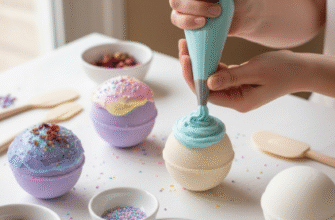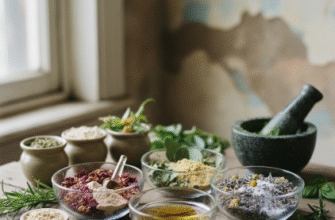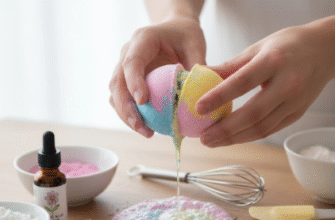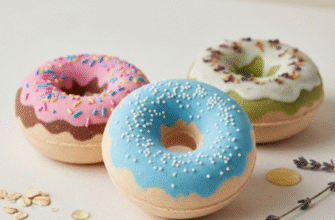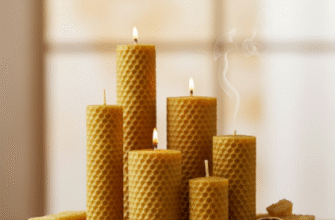Taming the glorious growth on your face takes more than just letting nature run its course. A truly magnificent beard, one that feels as good as it looks, often requires a little help. Enter beard balm – the hardworking multitasker of the beard care world. It conditions those whiskers, moisturizes the skin beneath, and provides just enough hold to keep stray hairs in line and shape your beard the way you want it. While plenty of excellent balms line the shelves, there’s a unique satisfaction, and often significant savings, in crafting your own. Making your own homemade beard balm puts you in complete control of the ingredients, allowing you to tailor it perfectly to your beard’s needs and your personal scent preferences. Forget questionable chemicals or overpowering artificial fragrances; this is about natural goodness shaped by your own hands.
Creating your own balm isn’t complex chemistry; it’s more like kitchen alchemy. With a few carefully chosen ingredients and a bit of melting and mixing, you can whip up a batch of high-quality balm that rivals expensive store-bought options. It’s a rewarding process, and the end result is a product you can trust because you know exactly what went into it. Plus, it makes a fantastic, personalized gift for fellow bearded brethren. Ready to ditch the guesswork and become a beard balm artisan? Let’s gather our supplies and explore the simple steps to creating your perfect conditioning and shaping blend.
Understanding the Building Blocks: What Goes Into Beard Balm?
Before we jump into the recipe, let’s break down the key components of a typical beard balm and understand the role each plays. This knowledge is crucial for customizing your blend later on.
1. The Foundation: Beeswax
Think of beeswax as the structural engineer of your balm. It provides the primary hold and shaping power. The amount of beeswax directly influences how stiff or pliable your balm will be. More beeswax equals a stronger hold, ideal for longer or more unruly beards that need serious taming. Less beeswax results in a softer balm, focusing more on conditioning with a lighter hold. We typically use cosmetic-grade beeswax pellets, which melt easily and evenly. You can find yellow (unrefined, retains a slight honey scent) or white (refined, neutral scent) beeswax; either works well.
2. The Conditioners: Natural Butters
Butters like Shea, Cocoa, or Mango are the deep conditioners in the mix. They are packed with vitamins and fatty acids that nourish both the beard hair and the skin underneath. They help to soften coarse whiskers, reduce beard itch (beardruff), and add a healthy sheen. Shea butter is renowned for its moisturizing properties, while cocoa butter offers a slightly firmer texture and a subtle chocolatey aroma (which may or may not be desired, depending on your scent goals). Mango butter is a lighter alternative, absorbing quickly. Combining butters can offer a broader range of benefits.
3. The Moisturizers: Carrier Oils
Carrier oils are the liquid gold of beard care. They dilute the essential oils (if used), but more importantly, they provide essential moisture, mimicking the natural sebum produced by your skin. This helps prevent dryness, flakiness, and breakage. Popular choices include:
- Jojoba Oil: Closely resembles human sebum, making it readily absorbed and non-greasy. Excellent for all skin types.
- Argan Oil: Rich in Vitamin E and antioxidants, known for softening hair and promoting shine. Often called ‘liquid gold’ for hair care.
- Sweet Almond Oil: A great all-around conditioner, rich in vitamins, and generally well-tolerated.
- Coconut Oil (Fractionated or Virgin): Highly moisturizing. Fractionated coconut oil stays liquid at room temperature and is less likely to clog pores than virgin coconut oil. Virgin coconut oil adds a distinct coconut scent and solidifies in cooler temperatures, which can slightly alter balm texture.
- Grapeseed Oil: A lighter oil that absorbs quickly without leaving a heavy residue.
You can use a single carrier oil or create a blend to harness the benefits of several different oils.
4. The Aroma (Optional): Essential Oils
Essential oils are potent plant extracts added primarily for scent. They allow you to customize your balm’s fragrance profile – woodsy, citrusy, spicy, herbaceous, the choice is yours. Popular options include Cedarwood, Sandalwood, Pine, Fir Needle, Bergamot, Orange, Peppermint, Tea Tree, and Lavender. It’s crucial to use essential oils sparingly, as they are highly concentrated. A little goes a long way. Remember, the goal is a pleasant background scent, not an overpowering perfume. Always choose 100% pure essential oils from reputable sources.
Choosing Your Ingredients Wisely
Quality matters. Opt for organic, unrefined ingredients where possible, especially for butters and carrier oils, as they retain more of their natural nutrients. Cosmetic-grade beeswax pellets are usually the easiest to work with. When selecting carrier oils and butters, consider your beard type and skin sensitivity. If you have particularly dry skin, richer oils like Argan or Avocado might be beneficial. For oily skin, lighter oils like Grapeseed or Jojoba could be better choices. Don’t be afraid to start simple with readily available ingredients like Shea butter, beeswax, jojoba oil, and perhaps one essential oil you enjoy.
The Master Recipe: Crafting Your Conditioning & Shaping Balm
This recipe provides a good starting point, offering a balance of conditioning and medium hold. Feel free to adjust the ratios later once you understand how the ingredients interact.
Ingredients:
- 2 Tablespoons Beeswax Pellets (approx. 1 oz or 28g by weight)
- 2 Tablespoons Shea Butter (approx. 1 oz or 28g by weight)
- 2 Tablespoons Jojoba Oil (approx. 1 fl oz or 30ml)
- 1 Tablespoon Argan Oil (approx. 0.5 fl oz or 15ml)
- 5-10 drops Essential Oil(s) of your choice (optional, for scent)
Note: Using weight measurements (grams or ounces) provides greater accuracy and consistency between batches than volume measurements (tablespoons). A small digital kitchen scale is a great investment for DIY projects like this.
Equipment:
- Double boiler (or a heatproof bowl set over a saucepan with simmering water)
- Small digital scale (recommended for accuracy)
- Stirring utensil (like a small silicone spatula or wooden stick)
- Tins or small jars with lids for storage (2 oz or 4 oz tins work well)
Instructions:
1. Prepare Your Double Boiler: Fill the bottom saucepan with an inch or two of water and bring it to a gentle simmer. Place the top pot or heatproof bowl over it, ensuring the bottom of the bowl doesn’t touch the simmering water.
2. Melt the Hard Stuff: Add the beeswax pellets and Shea butter to the double boiler. Stir occasionally as they begin to melt. Beeswax has a higher melting point, so it will take the longest. Be patient and keep the heat gentle to avoid scorching the ingredients.
3. Incorporate Carrier Oils: Once the beeswax and Shea butter are completely melted and combined into a smooth liquid, add the Jojoba oil and Argan oil (or your chosen carrier oil blend). Stir well to ensure everything is thoroughly mixed.
4. Remove From Heat: Carefully remove the double boiler top pot or bowl from the heat source. Let the mixture cool slightly for a minute or two. This is important before adding essential oils, as excessive heat can degrade their aromatic compounds.
5. Add Essential Oils (Optional): If using essential oils for scent, add your chosen drops now. Start with fewer drops (around 5) and stir thoroughly. You can always add a couple more if you desire a stronger scent, but you can’t take them away once added. Mix well one last time.
6. Pour into Containers: Quickly but carefully pour the liquid balm mixture into your clean, dry tins or jars. Work fast as the mixture will begin to solidify as it cools.
7. Cool and Solidify: Leave the containers undisturbed at room temperature to cool and fully solidify. This can take several hours. Avoid putting them in the refrigerator to speed up the process, as this can sometimes affect the final texture, potentially making it grainy. Once solid, seal the containers with their lids.
Verified Tip: For consistently smooth balm, ensure all ingredients are fully melted and homogenous before removing from heat. Stirring gently but thoroughly at each stage, especially after adding carrier oils and essential oils, helps prevent separation or graininess as the balm cools. Patience during the melting and cooling phases is key to a professional-feeling product.
Customizing Your Creation
Now that you’ve mastered the basic recipe, the real fun begins! Customization is where homemade balm truly shines.
- Adjusting Hold: Want a stronger hold for sculpting a formidable handlebar mustache or taming seriously wild hairs? Increase the beeswax ratio slightly (e.g., use 2.5 or 3 tablespoons) while slightly decreasing the butters or oils to maintain balance. For a softer, more conditioning-focused balm, reduce the beeswax and slightly increase the butters or carrier oils. Make small adjustments per batch until you find your perfect consistency.
- Switching Butters and Oils: Experiment with different combinations. Try cocoa butter instead of Shea for a slightly firmer balm (and a hint of chocolate scent!). Explore oils like sweet almond, grapeseed, avocado, or even a touch of castor oil (known for adding thickness and shine, use sparingly). Consider your beard’s specific needs – dry, oily, coarse, fine – when choosing replacements.
- Scent Layering: Become a scent mixologist! Combine complementary essential oils. Woodsy scents (Cedarwood, Pine) pair well with citrus (Bergamot, Orange) or spicy notes (Clove, Black Pepper – use very sparingly!). Herbaceous oils like Rosemary or Lavender offer different aromatic profiles. Always research safe usage rates for essential oils and perform a patch test.
How to Use Your Homemade Beard Balm
Using your creation is simple:
1. Scrape: Use the back of your thumbnail to scrape out a small amount of balm (usually pea-sized, adjusting for beard length and thickness).
2. Melt: Rub the balm vigorously between your palms. The heat from your hands will melt it down into an oily consistency.
3. Apply: Work the melted balm evenly throughout your beard, starting from the roots and moving towards the tips. Make sure to massage some into the skin underneath to combat dryness and itch.
4. Shape: Use your hands, a beard comb, or a boar bristle brush to distribute the balm fully and style your beard into your desired shape. The balm will provide control and tame flyaways as it sets slightly.
Apply balm to a clean, slightly damp or dry beard, typically once a day, often in the morning as part of your grooming routine.
Storage and Shelf Life
Store your homemade beard balm in a cool, dark place, away from direct sunlight and heat sources (like a bathroom windowsill or near a radiator). Heat can cause the balm to melt or soften significantly, potentially affecting its texture upon re-solidifying. When stored correctly in airtight containers, your balm should easily last for 6 months to a year, depending on the freshness of your ingredients, particularly the carrier oils. Always use clean hands or a small scoop to remove balm from the container to avoid introducing contaminants.
Important Safety Note: Before using any new homemade product extensively, especially one containing essential oils or new carrier oils/butters, always perform a patch test. Apply a tiny amount of the finished balm to a discreet area of skin, like your inner wrist or elbow. Wait 24-48 hours to check for any signs of irritation, redness, or allergic reaction. Discontinue use immediately if any reaction occurs.
Crafting your own beard balm is more than just following a recipe; it’s an exploration into natural ingredients and personalized care. It connects you more deeply to your grooming routine and ensures your beard gets exactly what it needs – pure, conditioning goodness formulated by you, for you. The process is simple, the results are rewarding, and your beard (and the skin beneath it) will undoubtedly thank you for the effort. So go ahead, experiment, refine your blend, and enjoy the satisfaction of a well-conditioned, perfectly shaped beard nurtured by your own creation.

